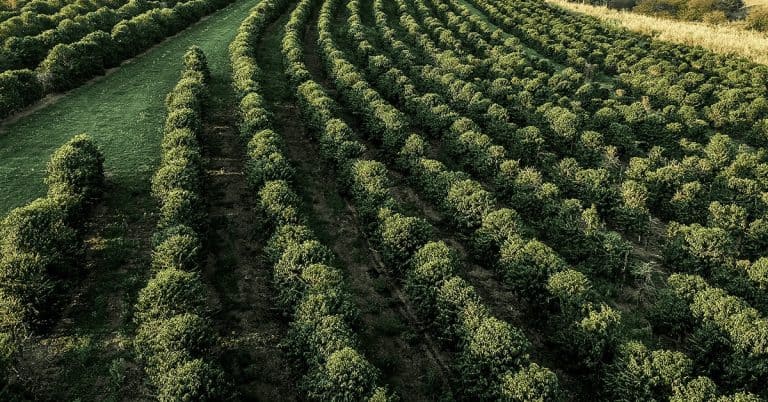Carbon capture is essential in fighting climate change and meeting the growing energy demands in the world. However, carbon capture technologies are not as efficient and sustainable as we need them to be. Engineers around the world have been working hard to design innovative solutions and improve the performance of carbon capture technologies. Learn more about the most promising engineering solutions for carbon capture that can help us achieve a sustainable future!
Solutions that can help mitigate climate change and energy issues
As the world continues to grapple with climate change, the need for sustainable energy solutions and ways to reduce carbon dioxide (CO2) emissions has never been more urgent. One of the most promising solutions is carbon capture technology, which involves capturing carbon dioxide emissions from industrial processes and storing them underground.
However, this technology is still in its infancy and is in need of engineering solutions to make it more efficient and sustainable. Currently, there are a number of solutions that can help achieve these goals. Let’s take a look at some of them:
– Advanced Absorption Technology
Absorption technology is one of the most widely used carbon capture methods. The process involves absorbing carbon dioxide from a gas stream through a chemical reaction. Scientists and engineers are now developing advanced absorption technologies that can significantly improve the performance of the process.
One such technology is “polymer impregnated” sorbents, which can capture up to 10 times more carbon dioxide than traditional sorbents. Another promising technology is “aqueous ammonia” absorption, which uses significantly less energy and can capture carbon dioxide more efficiently.
– Innovative Membrane Technology
Membrane technology is another carbon capture method that is gaining popularity. The process involves separating gases through a porous membrane. Engineers are now designing more innovative and selective membranes that can capture more carbon dioxide while allowing other gases to pass through.
One such breakthrough technology is “metal organic frameworks” (MOFs) membranes. Research shows that MOFs membranes can capture up to 40% more carbon dioxide than traditional polymers.
– Efficient and Low-Cost Separation Technology
Separation technology is crucial in carbon capture processes as it removes carbon dioxide from the captured gases. Traditional separation technologies are energy-intensive and expensive, reducing the economic feasibility of carbon capture. However, engineers are now developing more efficient and low-cost separation technologies.
One such technology is “ion exchange” membranes, which can remove carbon dioxide in a one-step process while requiring less energy than traditional methods.
– Utilizing Solar Energy
Carbon capture processes typically require energy to operate, which is another challenge in making them sustainable. Engineers are exploring alternative energy sources, such as solar energy, to power carbon capture.
One solar-based method is “photosynthesis-inspired” carbon capture, which mimics the natural process of photosynthesis to capture carbon dioxide using sunlight. Another solar-based method is “photocatalytic” carbon capture, which converts carbon dioxide into a usable fuel using solar energy.
– Carbon Utilization
Another promising engineering solution for carbon capture is carbon utilization. Instead of storing the captured carbon dioxide, engineers are exploring ways to utilize it in other industries such as construction, agriculture, and fuel production.
One such method is “carbon mineralization,” which turns carbon dioxide into a stable and usable mineral. This technology has the potential to remove large amounts of carbon dioxide from the atmosphere while creating valuable building materials.
– Carbon Storage
An essential component of carbon capture technology is safe and reliable carbon storage. Currently, CO2 is stored underground in geological formations, but this method is not without risks. To address these risks, engineers are developing advanced monitoring and verification systems that can ensure the safety and effectiveness of carbon storage. For example, researchers from the Massachusetts Institute of Technology have developed a system that uses satellite data to monitor underground carbon storage sites.
– Advanced Materials
One of the key challenges of carbon capture technology is finding materials that can effectively capture CO2 and then release it for storage. Researchers are now focused on developing advanced materials that can do just that.
For example, researchers from the University of California, Berkeley have developed a porous material made from metal-organic frameworks that can capture CO2 more effectively than traditional sorbents. This advanced material has the potential to significantly improve the efficiency of carbon capture technologies.
– Hybrid Capture Systems
Another promising engineering solution is hybrid capture systems, which combine post-combustion capture (PCC) and oxy-combustion capture (OCC). PCC is currently the most widely used carbon capture technology, but it is energy-intensive and can reduce plant efficiency.
OCC, on the other hand, is less energy-intensive but has yet to be proven on an industrial scale. By combining the two methods, hybrid capture systems can capture CO2 more efficiently and sustainably.
– Direct Air Capture
Another engineering solution that has gained attention in recent years is direct air capture (DAC). Instead of capturing emissions from industrial processes, DAC technology captures CO2 directly from the atmosphere.
While this technology is still in its early stages, it has the potential to significantly reduce atmospheric CO2 concentrations and mitigate the effects of climate change.
New technologies and tools can help shape a better future
In conclusion, with ever-increasing global carbon emissions, carbon capture technology has become an essential solution to combat climate change. However, to make this technology sustainable and efficient, engineers and researchers are constantly developing new engineering solutions and innovations.
The technologies highlighted in this article show significant progress and promise in improving the efficiency and sustainability of carbon capture. By implementing these solutions and more, we can ultimately achieve a sustainable future that balances our energy and environmental needs.

